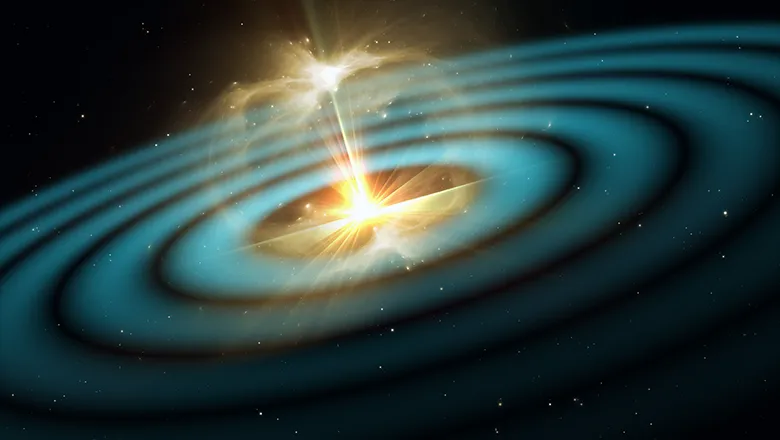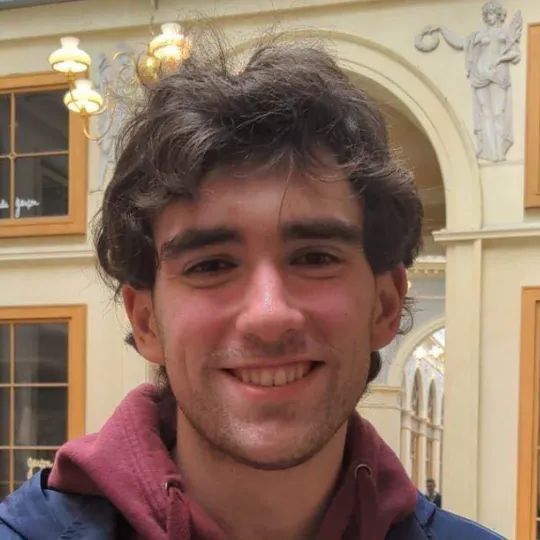04 December 2023
New method to map the Universe using gravitational waves developed by King's scientists and collaborators
The method uses gravitational-wave detections to study the large-scale structure in the Universe

A new method to map the Universe without the use of a telescope has been developed by physicists at King’s with collaborators in US universities. The approach uses gravitational waves emanating from events such as black hole and neutron star collisions, allowing scientists to study their distribution in space, and the distribution of their host galaxies.
Published in the Physical Review Letters journal where it made the front cover, the scientists believe their method will help further our understanding of the large-scale structure of the Universe.
The King’s physicists, Professor of Theoretical Physics Mairi Sakellariadou and postgraduate researcher Nikolaos Kouvatsos, along with their collaborators in US Universities are part of LIGO, a major consortium of researchers worldwide searching for gravitational waves.
Gravitational waves emanate from accelerating massive objects that warp the fabric of spacetime, producing ripples throughout the Universe. Although Einstein’s theory of General Relativity predicted their existence, they were first directly observed in 2015 when the twin LIGO interferometers detected gravitational-wave signals from a pair of black holes colliding. Since then, more than a hundred signals have been detected, with scientists expecting this number to reach thousands over the next few years.

The researchers have used these gravitational-wave detections to develop a new approach to unravelling the large-scale structure of our Universe. Making use of simulations, this method relies on very precisely locating in the sky a large number of gravitational-wave signals, from which the scientists can obtain information about the distribution of the black holes that emit them and, by extension, their host galaxies.
Nikolaos Kouvatsos and Mairi Sakellariadou said, “Gravitational-wave observations offer a powerful tool to test theories of gravity and particle physics models at energy scales above the ones that can be reached by the Large Hadron Collider in Geneva.
"They can also shed light on the astrophysics of compact objects and our Universe as a whole, as they act as an alternative ‘messenger’ to light – they reveal key information about compact objects such as black holes and neutron stars, without the need for light detections."
Physicists believe this ability to map the structure of spacetime will allow us to understand whether our Universe is anisotropic - different in different directions - or isotropic - the same in every direction. The application of this new method on LIGO detections from the last observations found no evidence for anisotropy, although this result could change as we acquire more data from gravitational-wave detections.


